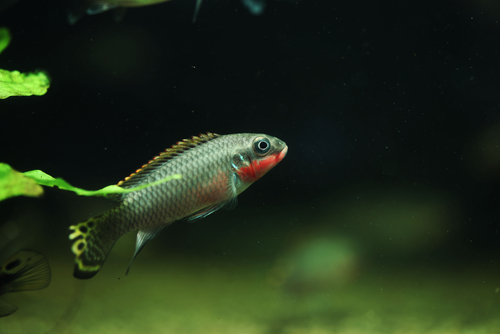Did you know that over 30,000 distinct species of fish have been found so far? This amount is extremely likely to climb as new species are identified.
We’ve compiled a list of seven of our favorite fish whose names begin with the letter N. The names of all of these fish begin with the letter N. In addition, there are 75+ popular fish that start with N, some might be the perfect match for your tank.
Some of them you may be acquainted with, while others are so out of the ordinary that I really doubt you’ve ever heard of them.
We’ll refer to them by their more common names since, let’s face it, very few people use scientific names of animals when they go to the pet store.
For those of you who are more interested in that element of the matter, I have given the scientific names.
Contents
Here is a list of 7 Popular Fish That Start With N
More related posts:
- Popular Fish That Start With P
- Popular Fish That Start With S
- Popular Fish Starting With F
- Popular Fish Starting With R
1. Nicaragua Cichlid (Hypsophrys nicaraguensis)
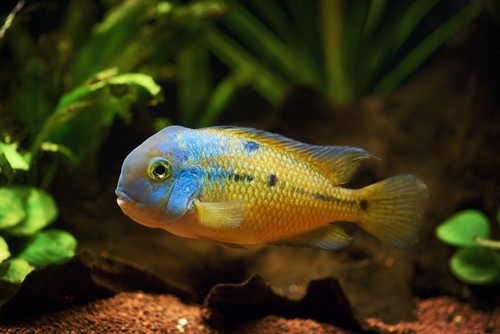
Males may reach a length of up to 10 inches and are quite possessive of their territory. It is advisable to keep them with a companion at all times.
In order to accommodate additional cichlid species in the aquarium, you will need a tank that is at least six feet long. He is known within the family of the giant Cichlasomas as one of the more gregarious members.
It practically seldom leaves its area, which it is able to defend on some times (such as during the reproductive cycle, for example), but in general, it is a quiet and tranquil species as a whole.
The Nicaragua Cichlid is known for its propensity to dig holes in the ground and otherwise alter its environment.
2. Nandus (Nandidae)
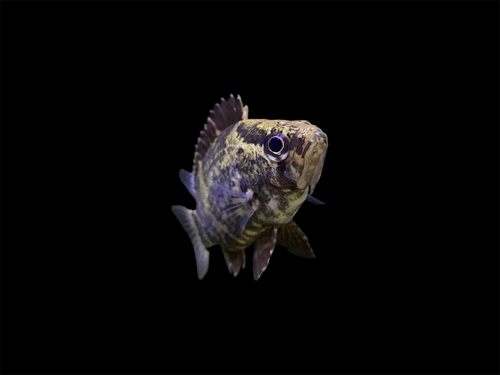
This species, which is more generally referred to as the Gangetic leaffish, may be found in its natural habitat in South Asia and Indochina.
They make their homes in still bodies of water such as lakes, ponds, ditches, and flooded fields, and can be captured from those environments. The fishkeeping industry makes use of them.
The Gangetic leaffish is a species of Asian leaffish that is endemic to South Asia and Indochina. It is also known by its common name, the Gangetic leaffish.
They thrive in bodies of water that move very slowly or do not move at all, such as ponds, lakes, ditches, and areas that have been flooded.
In addition to those names, the species is also known as the mottled nandus and the mud perch.
They have a significant economic impact and are highly coveted for their culinary qualities. They are also taken for the pet and aquarium industries.
3. Nigerian Red Krib (Polypterus bichir)
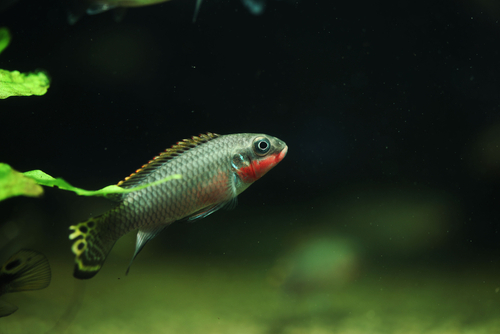
This cichlid is not very possessive of its territory, although it does prefer to be maintained in pairs.
They do best when kept in communities with other inhabitants of the tank that are calm yet hardy and reside in the middle layer. They might become timid if housed among other fish that are loud and energetic.
This fish comes in a wide variety of colors depending on where it is caught. It is a little cichlid that is elongated and has long dorsal and anal fins. The dorsal and anal fins on the male have fin extensions.
4. Needle Fin Eater (Platybelone argalus)
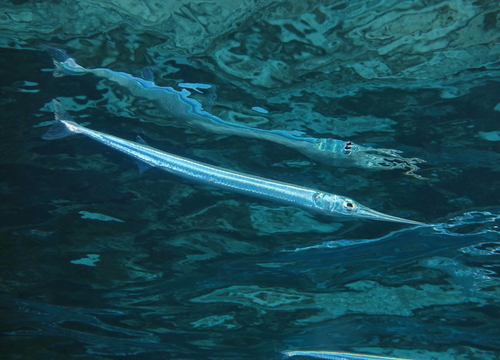
Both the Congo Basin and the Ubangi River may be found in Africa, and they are both the places where the Needle Fin Eater first appeared on the continent.
Due to the fact that it is a predator, it has to be housed in the same tank as larger fish that are found at the tank’s base.
They may eat fish that are lower on the food chain or bite the fins of larger fish that are found in the next layer up, which is the middle of the top layer.
Because of its predatory nature, this fish should be housed alongside larger fish that live in the substrate. You can eat the smaller fish, but the larger fish that live in the middle layer of the food chain can have their fins clipped.
This fish has an extremely elongated and thin body, and its nose is long and pointed, like a beak.
The primary color of it is yellow, and it has a prominent and broad dark gray or black line that runs from the eye all the way down to the caudal peduncle.
The color red may be seen at the base of the caudal fin. The fins are transparent in every other respect.
5. Needlefish (Belonidae)
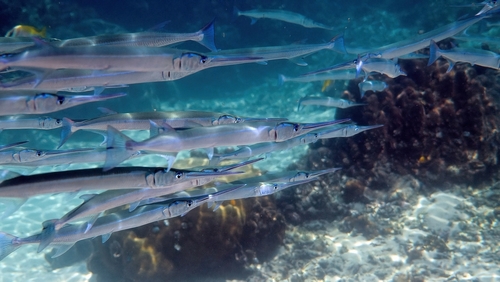
This fish is grayish-silver in color and has long jaws that are packed with teeth that resemble needles. From the beginning of spring through the end of autumn, it may be found living in the shallow waters of the Chesapeake Bay.
Piscivorous fishes of the family Belonidae, often known as needlefish or long toms, are commonly found in marine settings with very shallow depths or near the open ocean’s surface.
Some genera (for example, Strongylura) have species that live in marine, brackish, and freshwater environments, but others (for example, Belonion, Potamorrhaphis, and Xenentodon) only live in freshwater rivers and streams.
Despite having only tenuous links to the true gars, several needlefish species are referred to as gars or garfish.
Because needlefish are elongated and have long, thin jaws filled with sharp teeth, they are similar to North American freshwater gars (family Lepisosteidae). Indeed, the term “garfish” was initially applied to the needlefish Belone belone in Europe.
It wasn’t until the 18th century that European immigrants in North America began applying the name to North American fishes.
6. Nichols’ Mouthbrooder (Pseudocrenilabrus nicholsi)
The males are quite eye-catching, and the red and blue colors on their bodies are just as brilliant as those of certain tetras.
Actually, the color of their head shifts from brilliant yellow to mustard depending on how they are feeling at any one moment. In spite of their size, these fish are known to be highly hostile, particularly toward members of their own species.
It is challenging to maintain them in a cichlid community because they will aggressively protect the territory they have claimed. If you do decide to keep them together, make sure to offer plenty of hiding places for the females and the less dominant of the males.
However, they are able to coexist happily if they are kept with tank mates who are a good match for them. Even though this species is not all that popular in the aquarium trade, they are a beautiful addition to the aquarium and exhibit a wonderful coloration if you are able to find them.
They are members of the family Cichlidae and may be rather territorial, particularly during the periods of the year when they spawn, so keep this in mind while filling your aquarium.
Adult specimens will reach an average length of 3.5 inches, making them excellent for medium-sized aquariums. Males will have light blue scales on top of a pale gold background color when they reach maturity.
It is important to bear in mind that males will develop strong territorial instincts and will behave aggressively toward other men; therefore, it is ideal to retain a single male with many females.
7. Nile Bichir (Botia Lohachata)
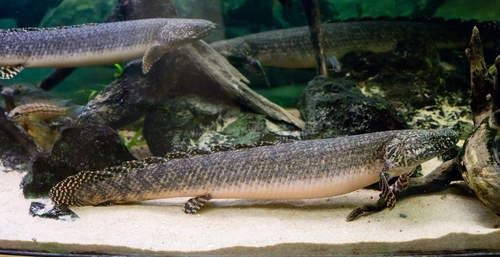
Bichirs tend to coexist peacefully with other tankmates as long as those other fish are too big for them to devour.
They will, however, consume members of their own species, therefore it is important to keep Bichir tank mates that are around the same size as themselves.
Keep the lid on the tank nice and tight since these guys have a tendency to jump ship. Polypterus bichir, often known as the Nile bichir, is a species of fish that may be found in the Nile as well as several of its African tributaries.
On the top, it has a darkish gray tint, and on the flanks, it has dark markings in the form of bands and a vertical stripe. This marking is more noticeable on juvenile fish, but it gradually disappears as the fish becomes older.
Freshwater Fish
1. Nicaragua Cichlid (Hypsophrys nicaraguensis)
2. Nobol Distichodus (Distichodus nobili)
3. New World Rivuline (Aplocheilus lineatus)
4. Nigerian Red Krib (Pelvicachromis taeniatus)
5. Needle Fin Eater (Belonophago tinanti)
6. Nile Puffer (Tetraodon fahaka)
7. New Zealand Smelt (Retropinna retropinna)
8. Nyerere’s Victoria Cichlid (Haplochromis nyererei)
9. Nile Bichir (Polypterus bichir)
10. Northern Squawfish (Ptychocheilus oregonensis)
11. Nase (Chondrostoma nasus)
12. Nurseryfish (Kurtus indicus)
13. Nkhata Cichlid (Copadichromis nkatae)
14. Northern Pike (Esox lucius)
15. Noodlefish (Salanx chinensis)
16. North American Darter (Percina pantherina)
17. Northern Stargazer (Astroscopus guttatus)
18. Njassae Synodontis Catfish (Synodontis njassae)
19. Northern Hog Sucker (Hypentelium nigricans)
20. Needlefish (Xenentodon cancila)
21. Naked-Back Knifefish (Gymnotus sp.)
22. Northern Sawfish (Pristis microdon)
23. North American Freshwater Catfish (Ictalurus furcatus)
24. Norbert’s Dwarf Cichlid (Apistogramma norberti)
25. Nandus (Nandus nandus)
26. Nyassa Blue Cichlid (Metriaclima zebra)
27. North American freshwater catfish (Ictaluridae)
Saltwater Fish
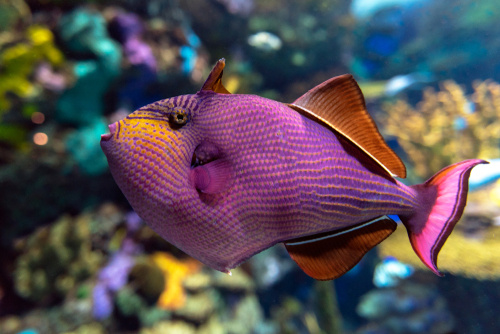
1. Notothen (Dissostichus mawsoni)
2. Northern Anchovy (Engraulis mordax)
3. North Pacific Daggertooth (Anotopterus nikparini)
4. Northern Clingfish (Gobiesox maeandricus)
5. Nurse Shark (Ginglymostoma cirratum)
6. Northern Lampfish (Stenobrachius leucopsarus)
7. Northern Sea Robin (Prionotus carolinus)
8. Namive’s Blenny (Blenniiformes)
9. Narrow-Lined Puffer (Arothron manilensis)
10. Neon Tetra (Paracheirodon innesi)
11. Neon Blue Goby (Elacatinus)
12. Neon Goby (Elacatinus)
13. Neon Gold Goby (Elacatinus)
14. Netted Pufferfish (Tetraodontidae)
15. Niger Triggerfish (Odonus niger)
16. Niphobles Puffer (Takifugu niphobles)
17. Northern Sawfish (Pristis microdon)
18. Northwest Anemonefish (Amphiprion rubrocinctus)
19. Nose Stripe Anemonefish (Amphiprion akallopisos)
20. North American darter (Etheostoma caeruleum)
21. North Pacific daggertooth (Anotopterus nikparini)
Tropical Fish
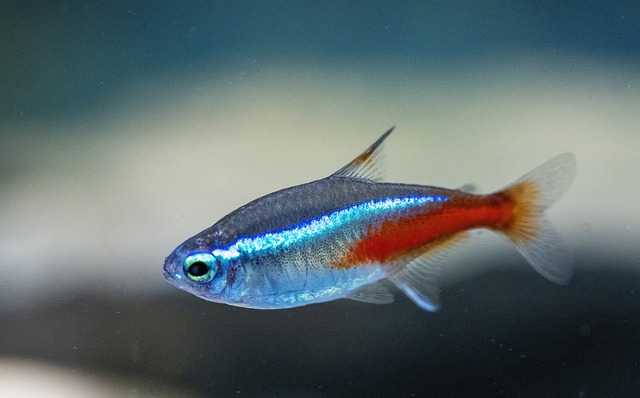
1. Neon rainbow (Melanotaenia praecox)
2. Neon tetra (Paracheirodon innesi)
3. New Guinea Tigerfish (Datnioides (Coius) campbelli)
4. Nile Puffer (Tetraodon lineatus/fahaka)
5. Naked-back knifefish (Gymnotidae)
6. Needlefish (Belonidae)
7. New World rivuline (Rivulus hartii)
8. New Zealand sand diver (Tewara cranwelliae)
9. New Zealand smelt (Retropinna retropinna)
10. Nibble fish (Garra rufa)
11. Noodlefish (Salangichthys microdon)
12. Northern anchovy (Engraulis mordax)
13. Northern clingfish (Gobiesox maeandricus)
14. Northern pike (Esox lucius)
15. Northern sea robin (Prionotus carolinus)
16. Northern squawfish (Ptychocheilus oregonensis)
17. Northern stargazer (Astroscopus guttatus)
18. Notothen (Pagothenia borchgrevinki)
19. Nurseryfish (Kurtus)
20. Nurse shark (Ginglymostoma cirratum)
Conclusion
The effort of identifying the names of fish that start with N may not be tough, but the work of compiling all of those names into a list was.
There are an almost limitless number of fish with names that begin with the letter N. We hope you found this page, which covers 75+ popular fish whose names begin with the letter N, useful in your search for the name of the fish that aroused your interest.
There are much more fish whose names begin with N than those on this list, which is far from complete. As scientists go further into understanding the natural world, new fish species are constantly uncovered.
On the other hand, thanks to the classification system, it is now much easier to recognize them and place them in the right group.
As a consequence, any new species of fish discovered to belong to the same family as the fish already listed, as well as any new orders or classes, will be ordered correctly.
However, the provided list of species is an excellent starting point for your investigation.

Ian Sterling, founder of Fishlab.com, began his aquarium journey over 30 years ago, driven by a deep fascination for fish and their diverse personalities. His website, Fishlab.com, is dedicated to making fishkeeping accessible and enjoyable, offering beginner-friendly guidance, expert insights, and a community for aquarists to connect and share experiences.


